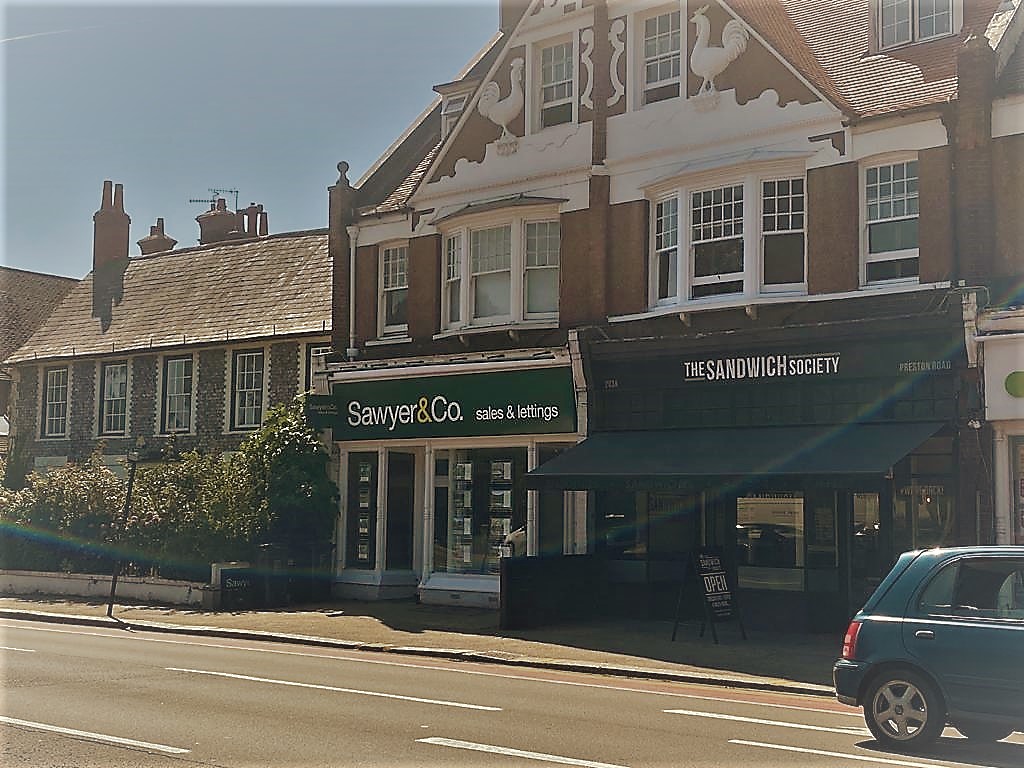If you can master the risks by building expertise in certain niche areas you may make profit by treading where others dare not. Knowing the enemy can be the biggest commercial advantage you have.
My specialist area, when looked at my career as a whole, is risk and risk management. My MSc is in Risk Management. I am an ex Bomb Disposal Officer and I have held several risk-management positions in and out of the military. Then I moved into property full time. At first, it felt like a complete change; my favourite hobby became my vocation and I celebrated just how different it was to the slightly stuffy world of working in commercial defence or being an Army Officer. Then I started to notice the similarities.
Geeky bit. Risk is calculated as probability x severity/impact. How likely something is to happen, multiplied by how bad it will be if it does happen. Imagine it presented on an x and y axis; top right is high for both. Imagine playing Russian roulette with an automatic pistol (please don’t actually try this) – the severity, certain death, is as high as it gets. The probability – it’s an automatic which ensures there will always be a round in the chamber- is also very high. This is maximum for both. Bottom left is low for both; perhaps the nominal chance of a paper cut when reading the glossy section of the weekend broadsheet. Everything else is in between. The art to risk is understanding where each risk sits and finding ways to mitigate or reduce that risk. The commercial advantage comes from identifying risks that are viewed irrationally – where people perceive a risk to be higher than it is, usually because they do not understand the probability. Examples are easy – fears around shark attacks and air travel are mostly irrational, yet they are incredibly unlikely. It is these areas that you want to focus on, areas that people feel are so risky when in reality, they are not.
The key thing in property is risk versus reward. For many the perceived risk associated with property development is too great. The papers and social media are full of failed ventures and people who got their numbers wrong. For others, the rewards of property, financial and in perceived status, draw them in and blind them to the risk. As with most things in life the key to success is about finding the balance. The more work you can do in understanding the risks associated with your area of property, the closer you can sail to the wind. The closer you sail to the wind the fewer people there are racing with you. You suddenly find yourself trading fresh ground. Some may consider you foolhardy, but if you are able to navigate choppy seas that others cannot, the crowded spaces of open houses, busy [pre-COVID] auction rooms, and Rightmove launches become a thing of the past.
Our areas of interest are High Yield centrally located properties to hold, and land and planning opportunities to sell. Fairly mainstream in many ways. The key for us is to carve out niches within that. For High Yield I love mixed use properties. Generally speaking, the upper parts are large and versatile; we buy everything on calculated sq. ft price, and the best value per sq. ft in our chosen area is almost always mixed use or commercial with Permitted Development rights. Also, there are numerous Permitted Development type opportunities both present and anticipated that can make them far more interesting. A lot of people don’t like them and a lot of lenders don’t like them. By understanding the risks involved you can manage them and then turn them to your advantage. One of our key strategies is taking mixed use properties, dealing with the issues, maximising the space and value and then making them attractive to both the rental market and future lenders. For example, hot takeaways built into properties on the margins of existing retail areas. They look horrible: pictures of Canton Dragon, last refurbished circa 1980 spring to mind. They are great! PD rights to convert to C3 residential and 2 further units above if the accommodation is ancillary. Centrally located too (or no one would have used the takeaway). We have tonnes of these little hacks.
Land is just the same. I dealt with my first Japanese Knotweed property 2 years ago. It was a headache and we spent almost £40k getting it sorted to ensure it did not hit end sales. Now I would actively seek those opportunities out. Why? Most people would be put off so the price at entry will be lower. We did not take full advantage of the tax advantages, but in many cases, you can claim back 150% of the remediation costs. PLUS, you then get a reputation for dealing with those issues so opportunities literally seek you out. A perfect scenario from a less than perfect starting situation.
I actively encourage you to understand the risks associated with your craft and rather than turning away from them, turn in to them. Master them and make them your friend. The cleanest air and the fewest people are at the top of the mountain. Why? This is because it is where the most risk is perceived to be. If you can overcome and manage those risks (risk never goes away) you can get to the top of the mountain in your area. Property is full of lots of mini mountains for you to master. If one looks crowded, find another and master it!
We are always looking for the best way for our clients to potentially achieve success through investing. Through our partnership with @Leopropcrowd we feel we have found an interesting and considered way to invest small and potentially build to bigger returns. We are excited to be working on our first project with them and although we are not quite ready to ‘lift the lid’ on that yet, we have some similar recent project case studies on their website now. Take a look and ask any questions you have through the forum or message us directly. ⠀
You can see an example by clicking the link – lhttps://www.leopropcrowd.com/property/detail/case-study-hmo-preston-street-brighton-by-target-5
Investment in property related assets puts your capital at risk and returns are not guaranteed. Past performance is not a reliable indicator of future success.
– Andy Babbayan Director Target Five







